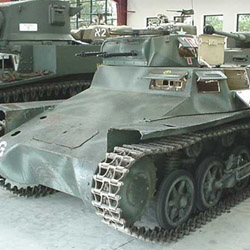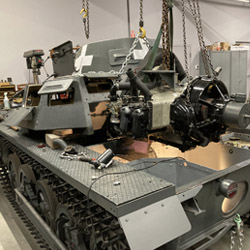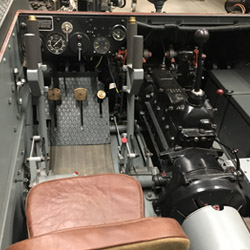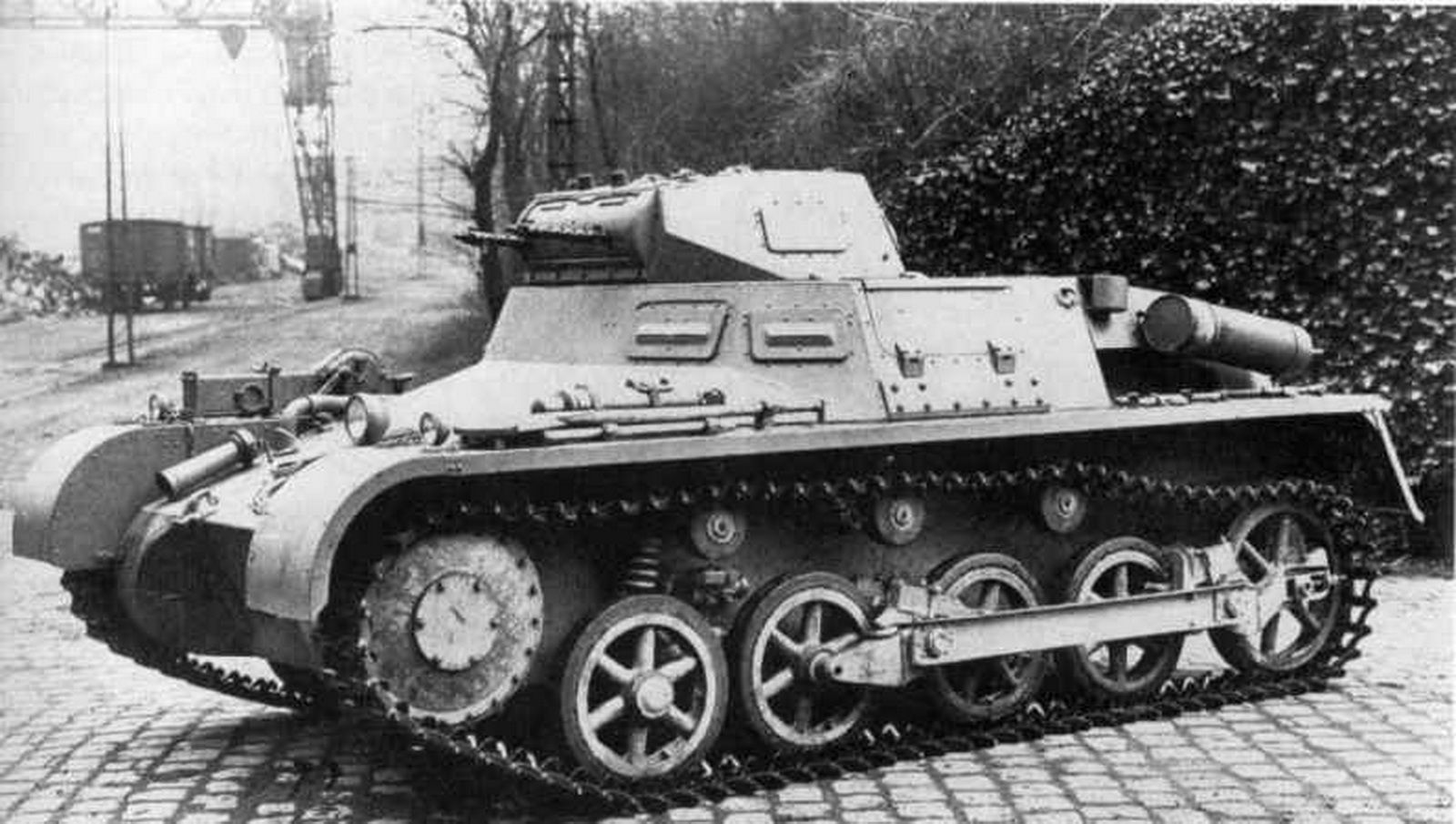After WWI, the Treaty of Versailles strictly forbade Germany from owning tanks, armored cars or armored vehicles. Further, the Treaty forced Germany to demobilize its military, end the manufacture and stockpiling of chemical weapons, stop production of military aircraft and reduce its Army to only 100,000 troops.
German rearmament began on a secret, small, and informal basis shortly after the Treaty was signed, but it was openly and massively expanded after the Nazi Party came to power in 1933. Covert operations were carried out to mask Germany’s true intentions. Glider clubs trained pilots, sporting clubs trained soldiers. Aircraft like the Heinkel He 111 were used for “transport” and tanks such as the Panzer I were called “tractors.” The few tanks built in 1917-18 never had the power to change the outcome of the Great War (WWI), but the potential for this new weapon was well understood.
Officially called the Sd.Kfz.101 (Sonderkraftfahrzeug/Special-Purpose Vehicle), the Panzer I became the first mass-produced tank of the Wehrmacht. In 1936 it got its modern name, the Panzerkampfwagen I Ausführung A (Ausf.A). The first fifteen were delivered without turrets, for training purpose only. Increased production of the military model began soon after.
By the late 1930s, the German military had become easily capable of overwhelming its neighbors. Successful German conquests of Austria, Czechoslovakia, Poland, Denmark, Norway, the Netherlands, Belgium, Luxembourg, and France took the form of “Blitzkrieg” attacks. The Panzer I played a key role in furthering Hitler’s initial exploits by being quick, lethal and able to repel small arms fire.
The Panzer I first saw combat in Spain during the Spanish Civil War and then in China during the Second Sino-Japanese War. Experiences with the Panzer I during the Spanish Civil War helped shape the German Panzerwaffe’s invasion of North Africa in 1935, Poland in 1939 and France and Russia in 1940. By 1941, the Panzer I chassis design was used as the mechanical foundation for tank destroyers and assault guns. There were efforts to upgrade the Panzer I throughout its service history, including by foreign nations, extending the design’s use.
The Panzer I’s performance in combat was limited by its thin armor and minimal armament, which consisted of two machine guns. This light tank was never intended for use against heavily armored targets, but it was ideal for infantry suppression. The Panzer I formed a large part of Germany’s mechanized forces, and was used in all major campaigns between September 1939 and December 1941, performing useful service against entrenched infantry and other targets that were highly vulnerable to machine gun fire.
Canadian forces captured this Panzer IA in Europe during WWII and brought it to Canada where it eventually ended up in the Canadian War Museum. Jacques Littlefield, with the Military Vehicle Technology Foundation, wanted to add the Panzer I to his collection. He traded several of his own tanks for this single Panzer I. After Jacques passing, the majority of his collection, including the Panzer IA, was donated to the American Heritage Museum. Greg Taylor, of Taylor Restorations and Consulting, had restored many of Jacques Littlefield’s tanks. He decided to take on the monumental effort of restoring this Panzer back to its original condition.
After years of incredibly detailed work, Greg was nearing completion of the project. Unfortunately, Greg passed away in May of 2020. With nothing left to do but to put the meticulously restored parts back together, the Panzer IA was moved from his shop in Nevada to the American Heritage Museum where re-assembly was finished
As of May 19th, 2021, the Panzer IA will sit adjacent to the Vikers Mk VI British light tank in the American Heritage Museum’s War Clouds exhibit. Both are historic treasures; the only ones of their kind on public display in the United States. The Panzer IA will provide a key addition to the story of Nazi Germany’s clandestine efforts to build its military and rampage through Europe and Russia. It will offer a window on a critical moment in time, the story of Germany’s incursions through Czechoslovakia and Poland, starting what would be World War Two.
The War Clouds exhibit offers an educational interpretation of the inter-war period and the rise of Imperial Japan and Nazi Germany. In clear view are the weapons used by people who stoked nationalism, conspiracies, racism, and antisemitism. The dissolution of democracies and rise of fascism and militarism around the world in the 1930’s can be studied and understood in this space.









